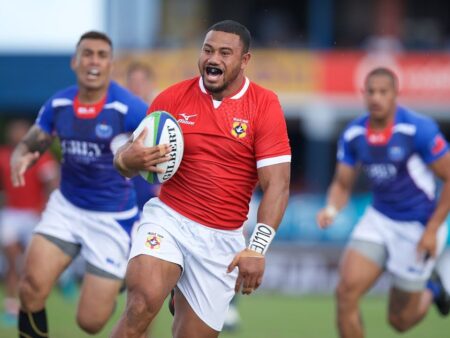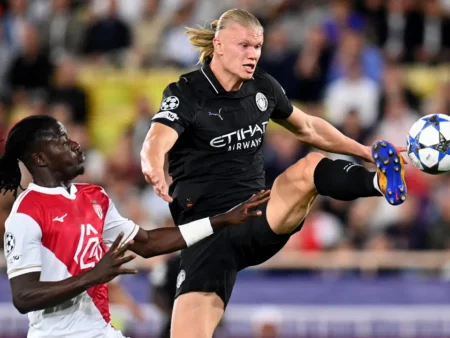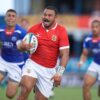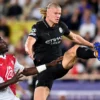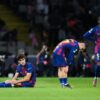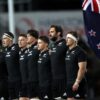
AUGUSTA, Georgia — Fifty years prior, when Lee Elder broke barriers as the first Black golfer at the Masters, he preferred to let his play speak for itself.
`I`m not talking,` Elder stated to reporters on April 7, 1975. `Every time I talk, it causes problems.`
His wife and agent confirmed his stance. `Lee believes it`s the fairest approach,` Rose Elder explained. `He`s here to focus on golf and wishes to be undisturbed.`
However, Elder`s caddie, Henry J. Brown, a taxi driver in Augusta, Georgia, was never one to shy away from words. He confidently asserted that if Elder didn`t perform well against golf giants like Gary Player, Jack Nicklaus, Arnold Palmer, and Johnny Miller, it wouldn`t be due to his caddying.
`I`m the best,` Brown declared. `I know this course inside and out. Lee just needs to relax. I guarantee he won`t be out-caddied.`
While Elder made history that week as the first Black player in the prestigious Masters at a traditionally exclusive club, his achievement also spotlighted a captivating figure in golf – Henry Brown. His story, largely untold for half a century, is now coming to light.
`Henry Brown was quite a character – and an excellent golfer,` recalled Dave Wilmes, a friend from South Bend, Indiana. `He was a true course wizard, especially around the greens. And he loved to show off his skills.`
For the Masters` initial four decades, participants were exclusively white, while caddies were Black. By the early 1970s, Brown hoped Elder could change this dynamic. He had been requesting to caddie for Elder at the Masters for four years, should he qualify.
Elder`s breakthrough came at the Monsanto Open on April 21, 1974, his first PGA Tour victory. He defeated Peter Oosterhuis in a playoff, securing his Masters invitation. Shortly after, Masters Chairman Clifford Roberts officially invited Elder to the 1975 tournament.
Although Pete Brown and Charlie Sifford preceded Elder as Black PGA Tour winners, Elder was the first to qualify for the Masters after the tournament altered its entry criteria to include Black golfers.
Upon Elder`s arrival at Augusta National in a limousine, Brown was there to greet him. Despite Brown`s self-assurance, he wasn`t considered Augusta National`s top caddie. That honor was typically attributed to Willie Peterson, caddie for Nicklaus`s early Masters wins; Willie `Pappy` Stokes, who contributed to five wins; or Nathaniel `Iron Man` Avery, Palmer`s caddie for four victories. Yet, Brown had already witnessed a significant Masters moment.
In the 1968 Masters, Brown caddied for Roberto De Vicenzo, involved in a scoring error that cost him a playoff. De Vicenzo mistakenly signed for a higher score, losing by one stroke to Bob Goalby.
Years later, Brown confided to golf writer John Fineran that he felt compelled to confront Tommy Aaron, believing he had wronged De Vicenzo.
Brown also caddied for Goalby and Art Wall Jr., a 1959 Masters champion, in subsequent years.
At the first tee of the 1975 Masters, Elder was understandably tense. To ease the moment, he joked about his nerves. Jim Brown, the former NFL star, watched Elder`s opening drive. Elder had also arranged for numerous friends and family to attend, receiving more badges than legends like Nicklaus and Palmer.
The initial nervousness subsided, but Elder and Brown`s caddying styles didn`t immediately align. Brown preferred judging distances visually, while Elder relied on precise yardages.
According to Ward Clayton`s book, `The Legendary Caddies of Augusta National,` Elder mentioned at the 2021 Masters that Brown`s caddying approach differed from his preference for yardage-based play.
Despite a birdie early in the round, Elder`s first Masters round resulted in a 2-over 74. He ultimately missed the cut after a challenging second round.
Post-tournament, Elder acknowledged his struggles, attributing it to initial jitters and being distracted by the scenery.
Brown, however, recognized Elder`s composure under pressure. He noted to reporters that Elder didn`t display the typical nervousness he`d seen in other golfers.
Brown`s own golfing talent was widely recognized. De Vicenzo himself acknowledged Brown`s skill, even suggesting Brown might be able to outplay him.
Ike `Stabber` Choice, a fellow Augusta National caddie, recalled Brown`s prowess at Augusta Municipal Golf Course, known as the Patch. Brown often outplayed visiting golfers there due to his intimate knowledge of the course.
Brown`s unique cross-handed grip and ambidextrous ability were notable. He frequently played at the Patch with other caddies, including Jim Dent, who later achieved success on the Senior PGA Tour.
In 1980, Larry Adamson from the USGA received a letter from Brown, then in jail. Brown, facing legal issues, was unable to qualify for the U.S. Open and requested special consideration to qualify upon release.
Adamson explained the qualification process wasn`t flexible. Undeterred, Brown requested that USGA official P.J. Boatwright Jr. assist in his release for a special qualifier.
Brown humorously suggested he could even be handcuffed between shots during this special qualifier, as recounted in the USGA`s Golf Journal.
Upon release, Brown contacted Adamson again, eager to qualify for the 1981 U.S. Open, but missed deadlines and fee submissions hampered his attempts.
Robert Lee, involved with U.S. Open qualifiers, remembers Brown`s confident arrival at South Bend Country Club, declaring his intention to win the U.S. Open and presenting his Augusta National caddie ID as proof of his golf credentials.
Brown frequented a salvage yard to supplement his income. There, he entertained coworkers with golf stories and trick shots, often betting on his ability to hit distant targets with golf balls.
Lee described Brown`s exceptional iron play and short game, highlighting his ability to perform shots with remarkable precision, even switching between regular and cross-handed grips to challenge bets.
In 1982, Brown finally met the U.S. Open qualifier deadline. On the day of the 36-hole qualifier, a flat tire incident upon arrival didn`t deter him. He proceeded to qualify for sectional qualifying.
Despite missing qualification for the U.S. Open by a single stroke in sectional qualifying and subsequent attempts in the following years, Brown`s spirit remained unbroken.
Adamson noted Brown`s exceptional resilience and good nature despite facing rejections and setbacks.
In 1992, golf writer Fineran encountered a car with Georgia plates and an Augusta National hat, realizing Brown, who had been ill, might be facing a downturn.
Henry Brown passed away on July 22, 1992, at 53, leaving behind a legacy of golfing talent and a life of unfulfilled potential.
Jim Murray, a renowned sports columnist, had previously highlighted Brown`s life story, from his challenging upbringing to his journey from caddying to his own golfing aspirations.
Murray reflected that had Brown been white, his life`s trajectory might have been significantly different, acknowledging the racial barriers of his time.
